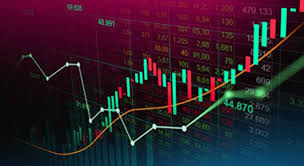Understanding Forex Trading Meaning, Benefits, and Strategies 1949882157
Understanding Forex Trading: Meaning, Benefits, and Strategies
Forex trading, short for foreign exchange trading, refers to the process of buying and selling currencies with the aim of making a profit. The Forex market is one of the largest and most liquid financial markets in the world, with a daily trading volume exceeding $6 trillion. With the advancement of technology, trading has become more accessible to individuals and institutions alike. Whether you are a novice trader or a seasoned investor, understanding the meaning of Forex trading is crucial for navigating this dynamic landscape. For aspiring traders in South America, platforms like forex trading meaning Argentina Brokers can provide valuable resources and insights.
The Basics of Forex Trading
At its core, Forex trading involves the exchange of one currency for another at a predetermined price. The currency pairs are quoted in a certain way, where one currency is the base currency, and the other is the quote currency. For example, in the EUR/USD pair, the Euro is the base currency, while the US Dollar is the quote currency. The price indicates how much of the quote currency is needed to purchase one unit of the base currency.
How Forex Trading Works
Forex trading occurs over-the-counter (OTC), meaning that trades are conducted directly between participants, usually through electronic trading platforms or by way of phone communications. Unlike traditional stock markets, the Forex market is open 24 hours a day, five days a week, allowing traders to enter and exit positions at any time. This flexibility is one of the primary appeals of Forex trading.
The Importance of Leverage

Leverage is a key concept in Forex trading, allowing traders to control a large position with a relatively small amount of capital. For instance, a leverage ratio of 100:1 means that for every $1 a trader puts up, they can control $100 in the market. While leverage can amplify profits, it also increases the risk of significant losses. Thus, understanding and managing leverage is critical for successful trading.
Types of Forex Traders
There are various types of Forex traders, each employing different strategies and timeframes. Here are a few common types:
- Scalpers: Traders who make rapid trades to take advantage of minor price movements.
- Day Traders: They open and close trades within the same day to avoid overnight risks.
- Swing Traders: Traders who hold positions for days or weeks, looking to profit from larger price swings.
- Position Traders: They take long-term positions based on macroeconomic trends and analysis.
Analyzing the Forex Market
Successful Forex trading requires understanding market analysis, which can generally be categorized into two main types: fundamental analysis and technical analysis.
Fundamental Analysis
Fundamental analysis involves examining economic indicators, news releases, and geopolitical events that may affect currency prices. Traders look at factors such as interest rates, employment statistics, and inflation to predict the direction of a currency pair. For example, a central bank’s decision to increase interest rates can lead to an appreciation of that currency, attracting foreign investment.
Technical Analysis
On the other hand, technical analysis relies on historical price data and charts to forecast future market movements. Traders use various tools, including indicators like moving averages, RSI (Relative Strength Index), and Fibonacci retracement levels, to identify trends and potential reversal points. Technical analysis is particularly popular among shorter-term traders.

Trading Strategies
There are numerous strategies that traders employ in Forex trading, and the choice of strategy often depends on the trader’s style and market conditions:
- Trend Following: This strategy aims to capitalize on the momentum of a price trend, entering trades in the direction of the trend.
- Range Trading: Range traders identify price levels at which a currency pair has historically bounced and take trades when the price approaches these levels.
- Breakout Trading: This involves entering a position when the price breaks through a defined support or resistance level, anticipating continued movement in that direction.
Risk Management in Forex Trading
Effective risk management is essential for long-term success in Forex trading. Successful traders know how to balance potential profits with acceptable levels of risk. Here are some essential risk management techniques:
- Setting Stop-Loss Orders: A stop-loss order automatically closes a trade at a predetermined price level to limit potential losses.
- Position Sizing: Calculating the appropriate position size based on account balance and risk tolerance ensures that no single trade can significantly impact the trader’s capital.
- Diversifying Trades: Avoiding concentration in a single currency or trade reduces overall exposure and helps manage risk.
Choosing a Forex Broker
Selecting the right Forex broker is crucial, as they provide the platform for executing trades. When considering a broker, traders should look at factors such as regulation, spreads, commission structures, leverage options, and the availability of trading tools. Researching and comparing brokers can lead to better trading outcomes.
Conclusion
In conclusion, understanding the meaning of Forex trading is the first step toward becoming a successful trader. By gaining knowledge about market dynamics, analysis techniques, strategies, and risk management, individuals can navigate the complexities of the Forex market. Whether you are just starting or looking to refine your skills, continuous learning and practice can enhance your trading proficiency. The Forex market is filled with opportunities, and with the right knowledge and approach, traders can harness its potential for financial success.
